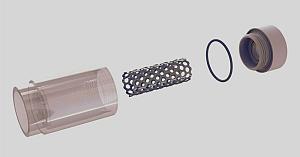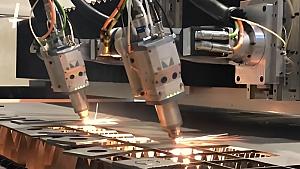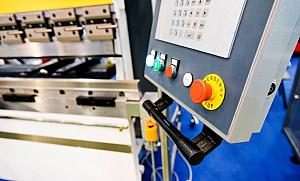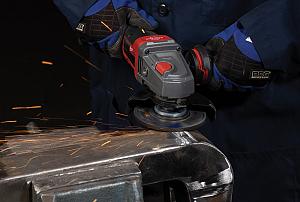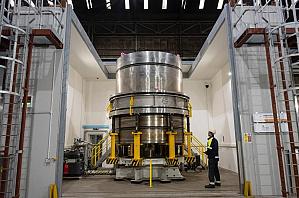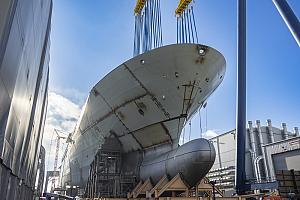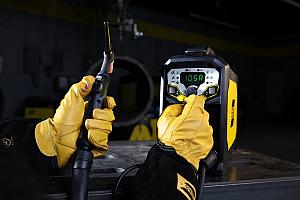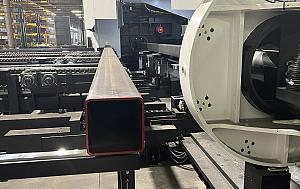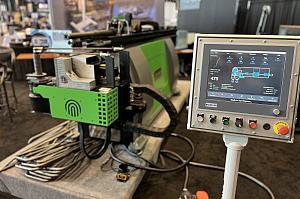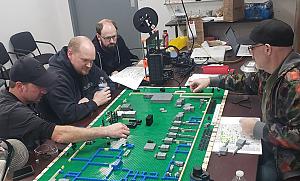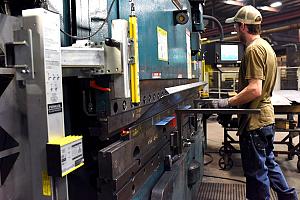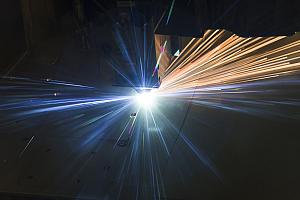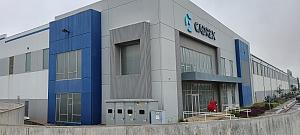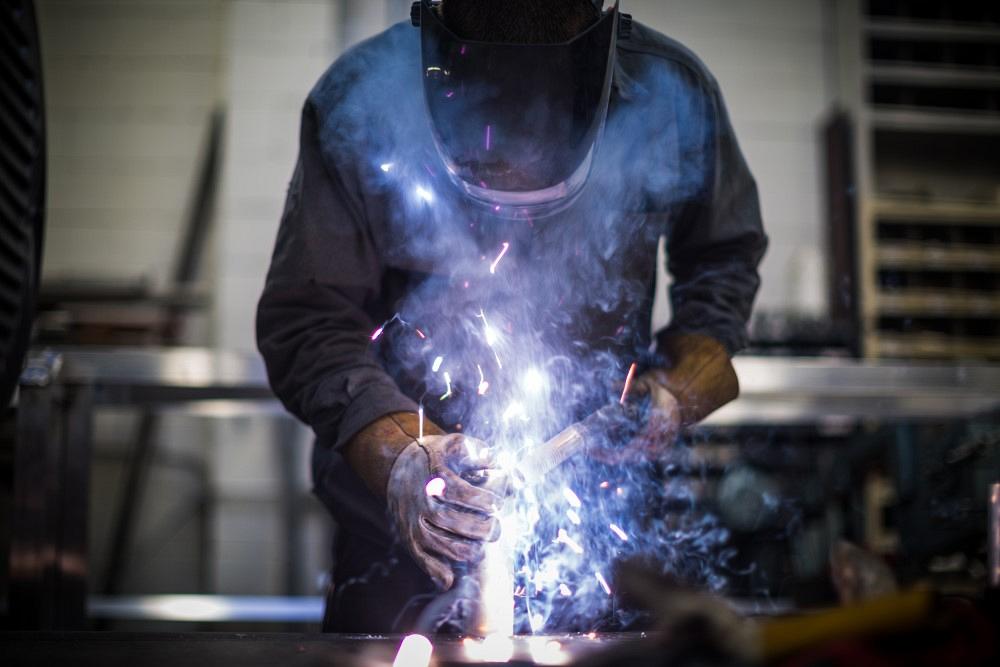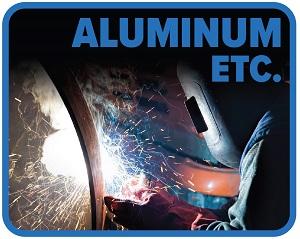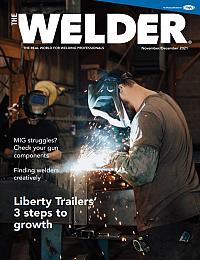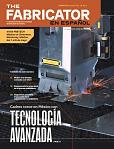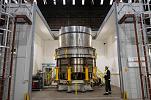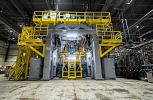Industrial Systems and Manufacturing Instructor
- FMA
- The Fabricator
- FABTECH
- Canadian Metalworking
Categories
- Additive Manufacturing
- Aluminum Welding
- Arc Welding
- Assembly and Joining
- Automation and Robotics
- Bending and Forming
- Consumables
- Cutting and Weld Prep
- Electric Vehicles
- En Español
- Finishing
- Hydroforming
- Laser Cutting
- Laser Welding
- Machining
- Manufacturing Software
- Materials Handling
- Metals/Materials
- Oxyfuel Cutting
- Plasma Cutting
- Power Tools
- Punching and Other Holemaking
- Roll Forming
- Safety
- Sawing
- Shearing
- Shop Management
- Testing and Measuring
- Tube and Pipe Fabrication
- Tube and Pipe Production
- Waterjet Cutting
Industry Directory
Webcasts
Podcasts
FAB 40
Advertise
Subscribe
Account Login
Search
Aluminum Etc.: What welders should know about arc welding aluminum
Two fundamental principles of aluminum welding: Knowing the roles of oxygen and material prep
- By Gina Cutts
- Updated August 10, 2023
- December 14, 2021
- Article
- Aluminum Welding
When I introduce my students to the art of welding aluminum, I make sure to emphasize two important facts about the material and how it will affect their final weld. Whether you’re a beginner or a seasoned pro, it’s never a bad thing to brush up on the fundamentals of welding a specific material, especially one as finicky as aluminum.
Arc Welding Aluminum Fundamentals
First, the most important thing to remember when working with aluminum is that it loves oxygen.
This is a good thing when corrosion resistance is a factor in your project. The surrounding air is going to bond with the aluminum and form an oxidized layer that has a melting point roughly two times higher than the aluminum itself. Removing that oxidized layer manually or mechanically will allow you to begin working with the material.
Second, be sure to clean the material properly and with dedicated aluminum-only tools in a controlled environment, if possible. If you don’t have a controlled environment, you will most likely have to clean your aluminum after every 15 minutes of inactivity. That is how fast it will re-bond with the oxygen in the atmosphere and form that layer of oxidization. The filler metal you use will serve you best if you keep it sealed or in a warm dry place as well to prevent it from picking up moisture and contamination.
I cannot overstate how much cleaning or not cleaning will affect your aluminum. Be mindful of touching your workpiece and filler metal with gloves or even your bare hands. Dirt and grease from your gloves will negate your cleaning efforts, as will the oils from your hands.
Most often, you’re going to weld aluminum using alternating current with argon as your shielding gas. There are ways to get a little extra scrubbing/cleaning action by adjusting the settings, but this will only make a difference if your aluminum is clean to begin with.
Arc Welding Aluminum with Helium
I am old enough to remember when we worked with 100% helium or an argon/helium mix. Helium was great for adding extra heat to the weld that would punch through that oxidized layer for deeper penetration. It was a little more forgiving on the welds. Helium is rarely used today as it has become way too expensive and goes beyond what many shops budget for consumables.
I keep a dedicated aluminum area in my shop, and I have separate abrasives and tungsten grinders that I use only for aluminum too. This is all to try and limit any cross contamination with other alloys. Aluminum is such a satisfying material to work with—and the results look so good—that it is worth the extra effort.
About the Author

About the Publication
subscribe now
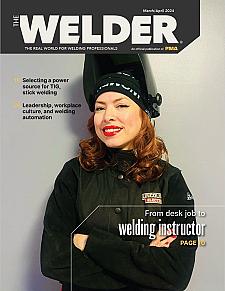
The Welder, formerly known as Practical Welding Today, is a showcase of the real people who make the products we use and work with every day. This magazine has served the welding community in North America well for more than 20 years.
start your free subscription- Stay connected from anywhere
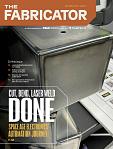
Easily access valuable industry resources now with full access to the digital edition of The Fabricator.
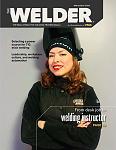
Easily access valuable industry resources now with full access to the digital edition of The Welder.
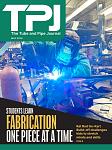
Easily access valuable industry resources now with full access to the digital edition of The Tube and Pipe Journal.
- Podcasting
- Podcast:
- The Fabricator Podcast
- Published:
- 04/16/2024
- Running Time:
- 63:29
In this episode of The Fabricator Podcast, Caleb Chamberlain, co-founder and CEO of OSH Cut, discusses his company’s...
- Industry Events
16th Annual Safety Conference
- April 30 - May 1, 2024
- Elgin,
Pipe and Tube Conference
- May 21 - 22, 2024
- Omaha, NE
World-Class Roll Forming Workshop
- June 5 - 6, 2024
- Louisville, KY
Advanced Laser Application Workshop
- June 25 - 27, 2024
- Novi, MI

